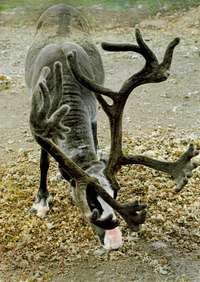|
|
Mountain/Rock |
|---|---|
|
|
71.17241°N / 25.78545°E |
|
|
Hiking, Trad Climbing, Scrambling, Skiing |
|
|
Spring, Summer, Fall, Winter |
|
|
1007 ft / 307 m |
|
|
Overview
Even though it’s neighboring point, Knivskjellodden, is 1,500 meters further north, the dramatic 307-meter high cliff at Nordkapp has traditionally been recognized as the “northern-most point in Europe”. It is about the same latitide as Point Barrow Alaska. This steep cliff has been used as a navigational aid for many centuries. Located on the Island of Magerøya, Nordkapp receives approximately 200,000 tourists every year, primarily in the summer months. On the plateau at the top of the cliffs there is a visitors center, gift shop, a chapel (the northernmost in the world) and various monuments and statues, the most notable being a large globe near the top of the cliffs. The island features several other northern-mosts-in-the-world including a hotel, a 6-hole golf course, and a brewery. In April several Sami (the preferred name for the Lapps) families lead approximately 6,000 reindeer to the island for summer grazing.The most dramatic facility is the Arctic Cave Bar (yes, it’s the Northern-most bar and buffet in the world), which was carved into the top of the cliff beneath the visitor’s center, and features theater-like seating with an expansive glass window looking north across the vast Arctic Ocean. A Nordkapp cocktail (vodka and champagne) or a Mack øl (ale) are the best ways to salute the midnight sun from the King’s Balcony.
If you have several hours to spend it is an easy 10 km (one way) hike on a trail out to the actual northern-most point.
History
Approximately 10,000 years ago the first humans, ancestors of the Sami, settled in the region, living in sod huts and surviving by hunting and fishing. In the Viking age the region of Finnmark was officially (via taxation) part of one of the kingdoms that eventually united to form Norway. In the middle ages, fishing villages were established and trade occurred with Germanic Hanseatic cities to the south and with Russian tribes to the east.Beginning in the middle ages Nordkapp became a tourist destination for wealthy adventurers. Royal visitors, Prince Lois Philippe of Orleans, Oscar II of Sweden and Norway, Keiser Wilhelm II of Germany and King Chulalonkorn of Thailand all made the expensive journey and difficult climb to the top of the cliffs.
In 1941 the Nazis occupied all of Norway, primarily for three reasons: to control the port (Narvik) that exported northern Swedish iron ore, to gain access to Norway’s heavy water production facility, and to prevent the British from using it as a base to invade Germany. During the war, allied ships dodged German patrol boats and submarines to carry supplies to Russia via the route around Nordkapp. Upon leaving in the mid 1944 the Nazi’s scorched earth policy resulted in complete destruction of virtually every building in northern Norway. It wasn’t until 1969 that reconstruction was finished. In 1999 the longest undersea tunnel (almost 7 km) in the world was completed, connecting Magerøya to the mainland.
Getting there
Getting there has always been a big part of the adventure of Nordkapp. For the authentic adventure you could duplicate the original route by taking a boat to the base of the cliffs and then scaling the (class 3/4) cliffs to the plateau. However, most people just drive or take the bus from Honningsvåg, which has an airport and is a stop on the Hurtigruten coastal ferry. Although you can drive the entire route from southern Norway, the unbelievably scenic Hurtigruten ferry is highly recommended: “The Norwegian Coastal Express better known as the "world ’s most beautiful sea voyage" calls at 34 ports, from Bergen all the way to Kirkenes on the Russian border. The ships deliver freight, post and passengers to remote communities, some of which are home to just a few hundred people. Traveling along this beautiful coastline, through magical fjords to enchanted islands, we enjoyed a genuine, friendly and unpretentious voyage which is truly Norwegian.”Red Tape
“There is no red tape in Scandinavia.” In Norway you are allowed to roam the land and put up your tent for a night or two in any spot that doesn't disturb people. The only rule is that you must be 150 meters from residences.Just a few hundreds meters before the visitors center there is a tollbooth where they ask you to pay a lot of money. The best thing to do is leave your car in a parking area a few hundred meters earlier and outflank the tollbooth by hiking across the meadow.
Etymology/ Translations
Nordkapp is a Norwegianized form of the English name North Cape, which first appeared on a navigational chart from a 1553 English expidition searching for the northwest passage. The original Norse name for the location is Knyskanes, meaning ???.Knivskjellodden, the actual northernmost point, means knife-boundary-point.
Magerøya means meager island.
Hvorfor er alt så dyrt i Norge? means: Why is everything so expensive in Norway?




